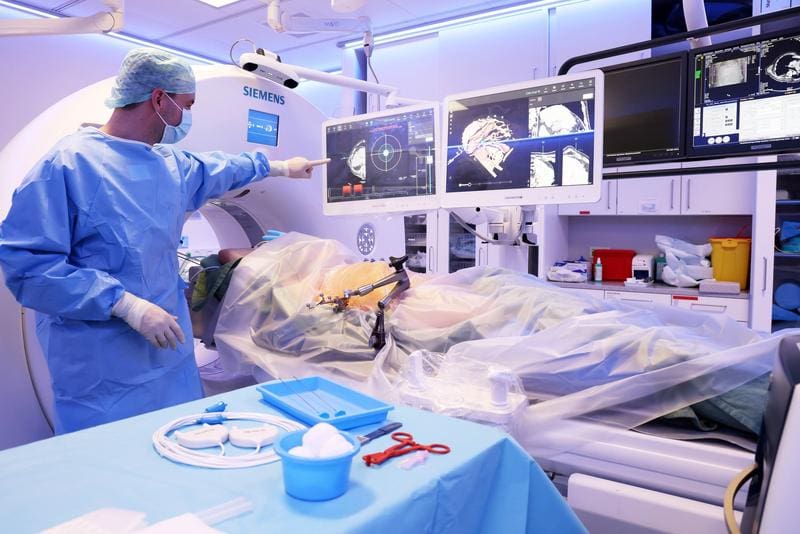University Hospital Regensburg introduces innovative electrochemotherapy for liver tumors
The University Hospital Regensburg (UKR) is setting new standards in the treatment of liver tumors with electrochemotherapy (ECT). This minimally invasive and gentle method offers a promising option for patients with primary or secondary liver tumors, especially when surgical procedures are not possible or tumors are close to sensitive structures such as blood vessels or bile ducts.
Electrochemotherapy combines the administration of a cytotoxic drug, usually bleomycin, with targeted electrical impulses. These impulses briefly open the cell membranes of the tumor cells, allowing the drug to penetrate the cells in high concentrations. The procedure increases the effectiveness of the treatment, while the surrounding healthy tissue is largely spared. ECT is particularly beneficial for hard-to-reach tumors where conventional ablation methods such as radiofrequency or microwave ablation are not applicable.

A major innovation is the introduction of a bipolar electrode, which simplifies treatment. Instead of several needles, a single puncture site is now sufficient, which makes the procedure safer and less complex. Small tumors that are difficult to access can thus be treated more efficiently. ECT is applied once and in low doses, which minimizes the burden on patients. With AI-supported navigation, one or two tumor foci can be treated in a targeted manner without heat development, in contrast to thermal procedures such as radiofrequency ablation.
Treatment is carried out after careful coordination in an interdisciplinary tumor board, in which experts from various disciplines determine the optimal therapy for each patient. With this approach, the UKR underlines its leading role in interventional oncology and makes an important contribution to the personalized and gentle treatment of liver tumors. The method improves the quality of life of those affected, especially in the early metastatic stage, and reduces the physical and psychological burden of cancer therapies.
Editor: X-Press Journalistenbû¥ro GbR
Gender Notice. The personal designations used in this text always refer equally to female, male and diverse persons. Double/triple naming and gendered designations are used for better readability. ected.




